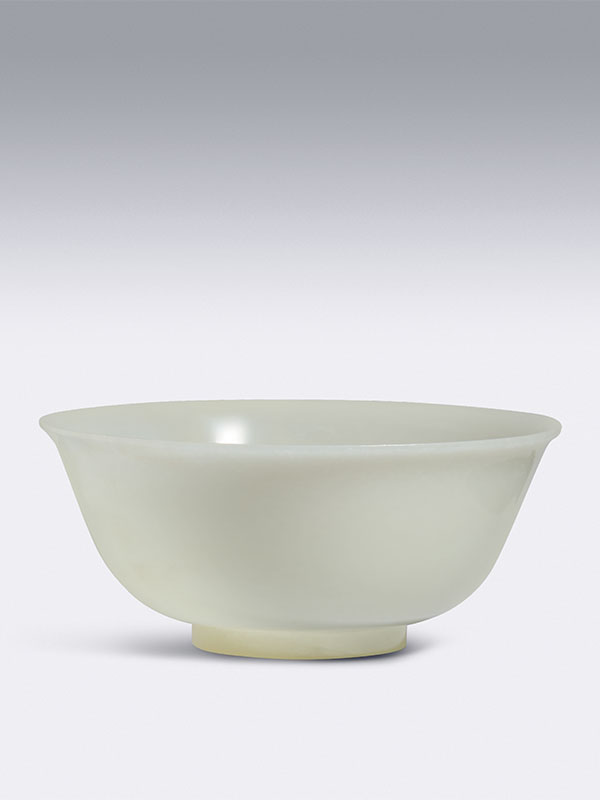Jade bowl
China, 18th century
A bowl carved from a single block of nephrite, the deeply rounded sides rising from a short, straight foot with square-cut footrim and terminating in a gently everted rim. The translucent stone is of palest celadon tone with some white and dark veining and the surface of the perfectly plain bowl is smoothly polished.
In the eighteenth century the form and dimensions of jade bowls invariably follow examples in porcelain and the present jade bowl is no exception. The balanced carving and smooth finish indicate that it was made in a period when good quality jade was in abundant supply and used for carving without regard to the amount of material wasted in the process. A jade boulder of the size required to carve such a bowl would be difficult to find. The stone used for this bowl possibly came from Hetan in Xinjiang Province. A closely comparable jade bowl is in the collection of the Museum of East Asian Art in Bath.[1] A pair of comparable jade bowls is in the Hotung collection at the British Museum.[2] Rawson describes such undecorated jade vessels in porcelain shapes as representing probably “…the highest quality of eating and drinking utensils”.[3]
Provenance:
Private collection, Belgium
Sotheby’s London, 13.11.1979, lot 278, the property of a lady.
1 Forsyth, A. and McElney, B., Jades from China, The Museum of East Asian Art, Bath, 1994, no. 340, p. 405.
2 Rawson, J. Chinese Jade from the Neolithic to the Qing, The British Museum press, London 1995, no. 29:13, p. 400
3 Rawson, J. op. cit. p. 400
清中期/白玉撇口盌
此盌由整料雕成,素面。盌内掏膛深入,器壁极薄,透光见指;圈足矮直,呈玉环底。玉盌总体呈现白中闪青的颜色,打磨抛光细致,宝光迷人。

